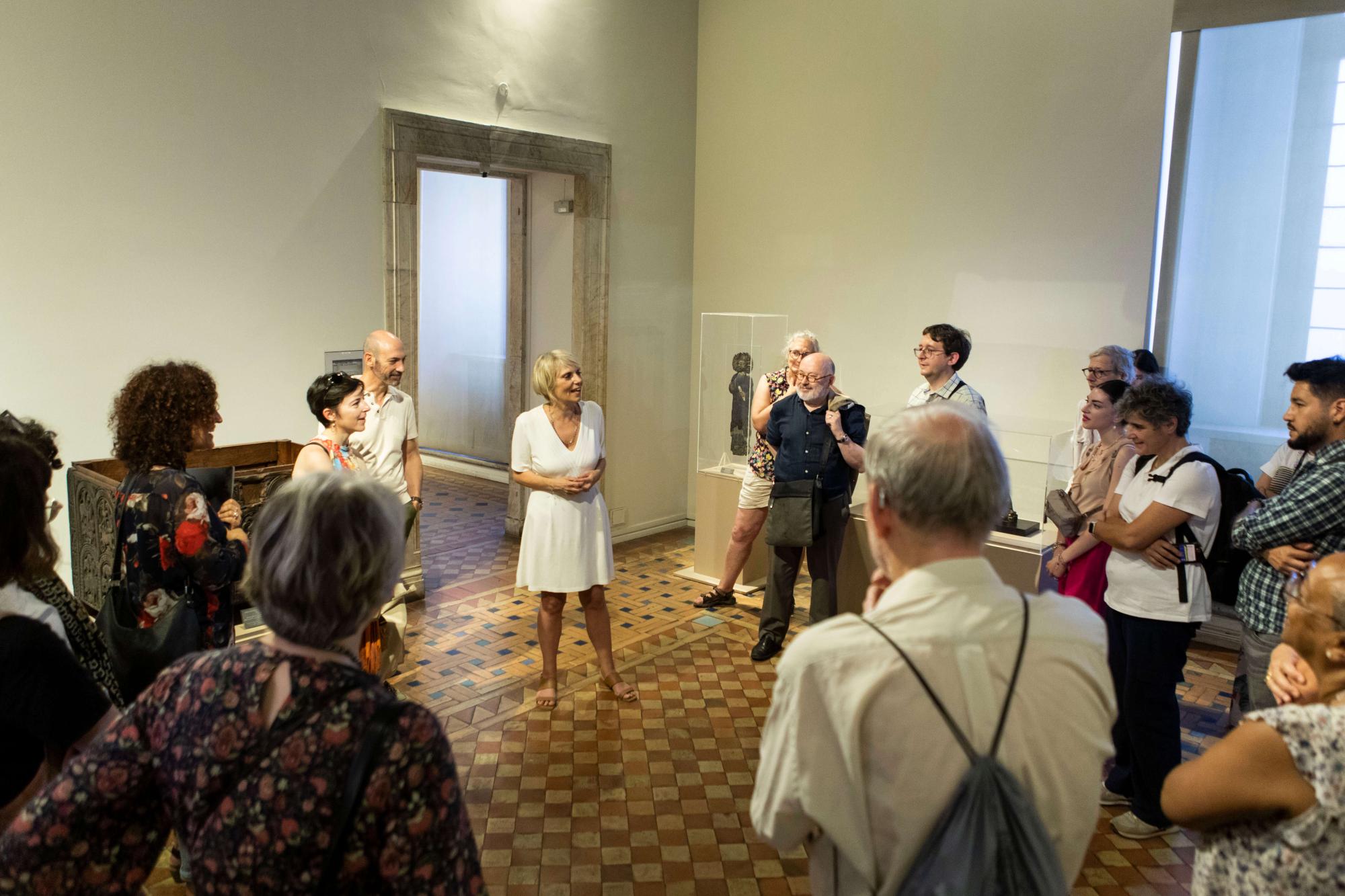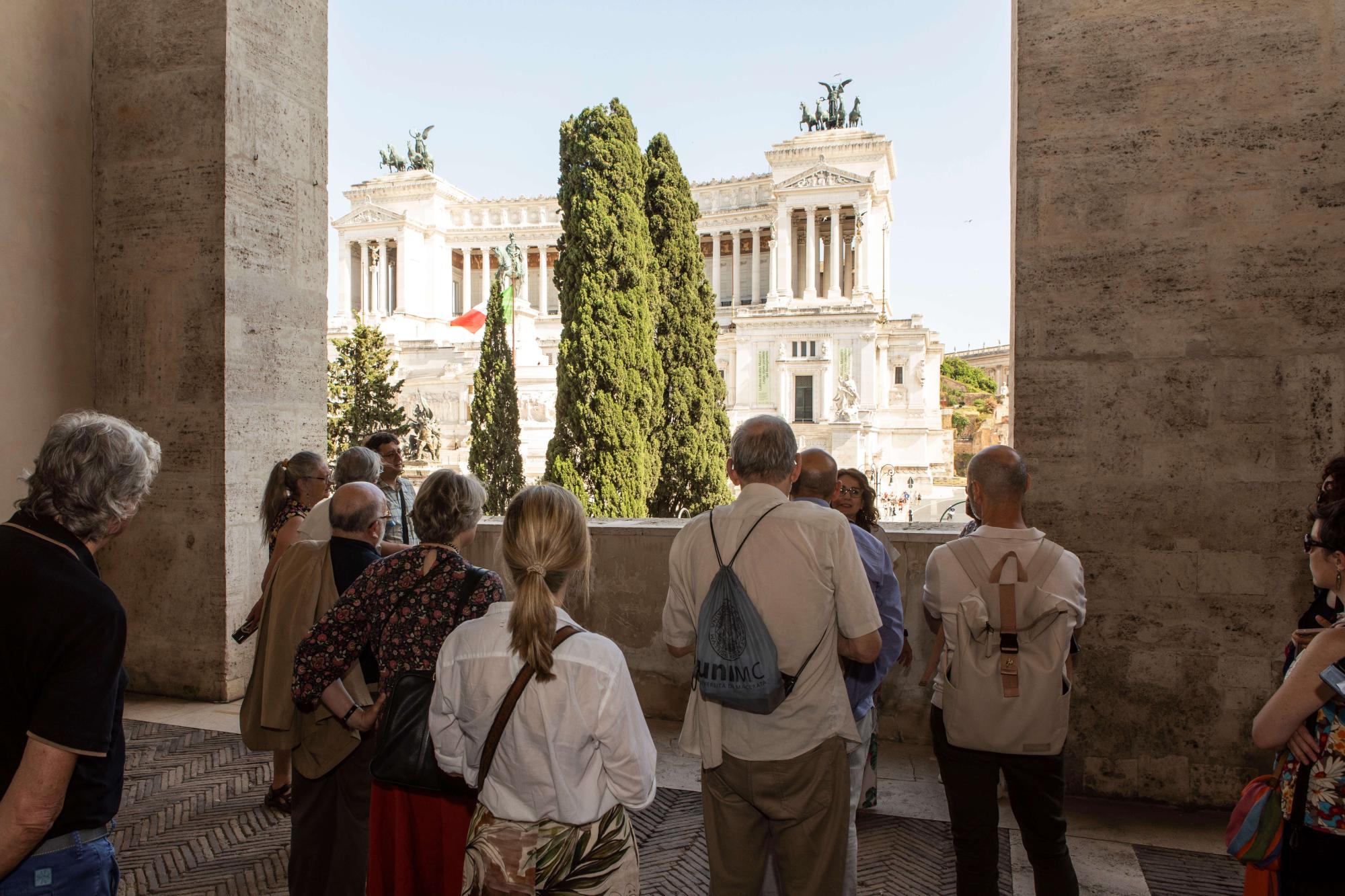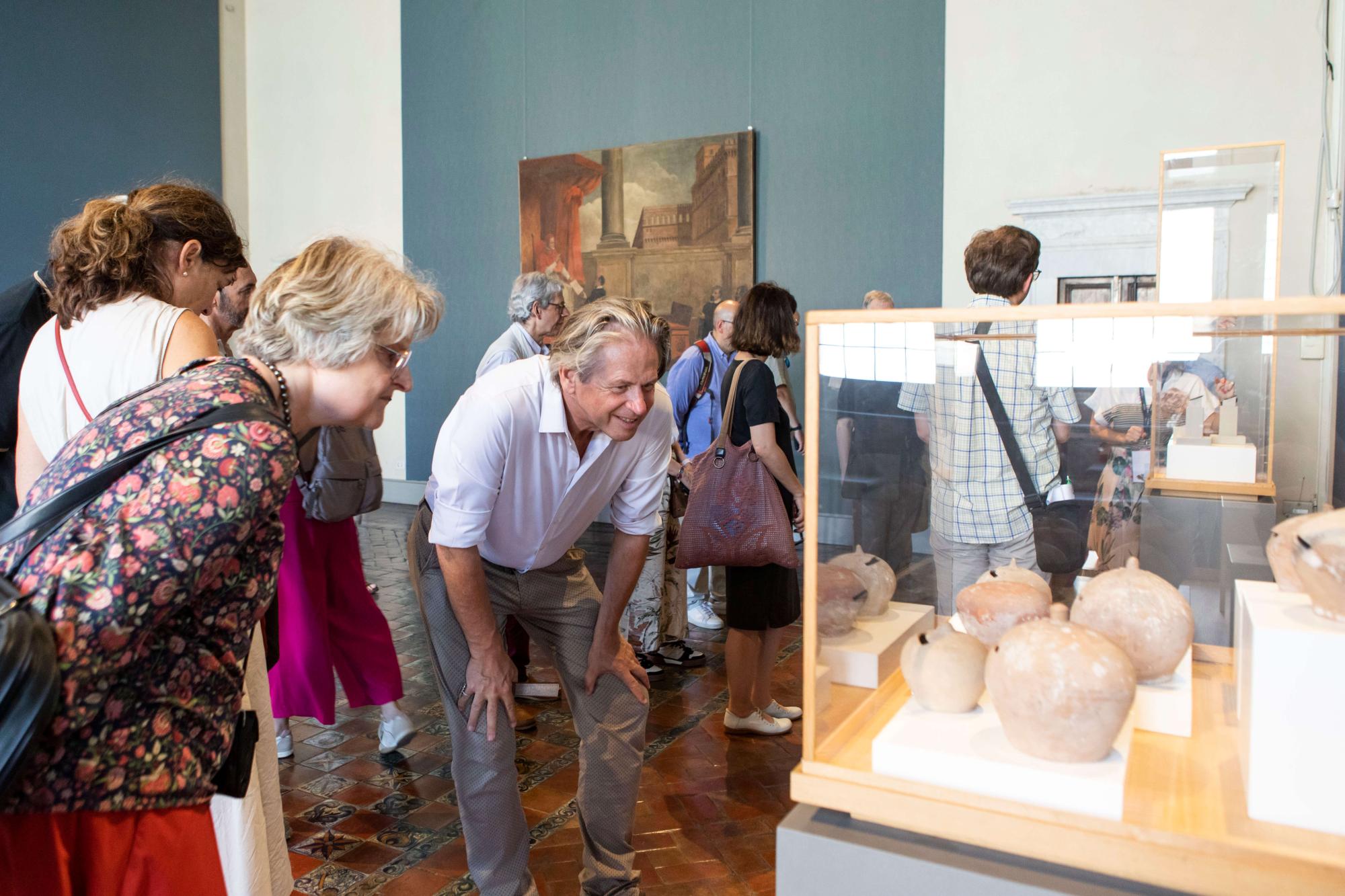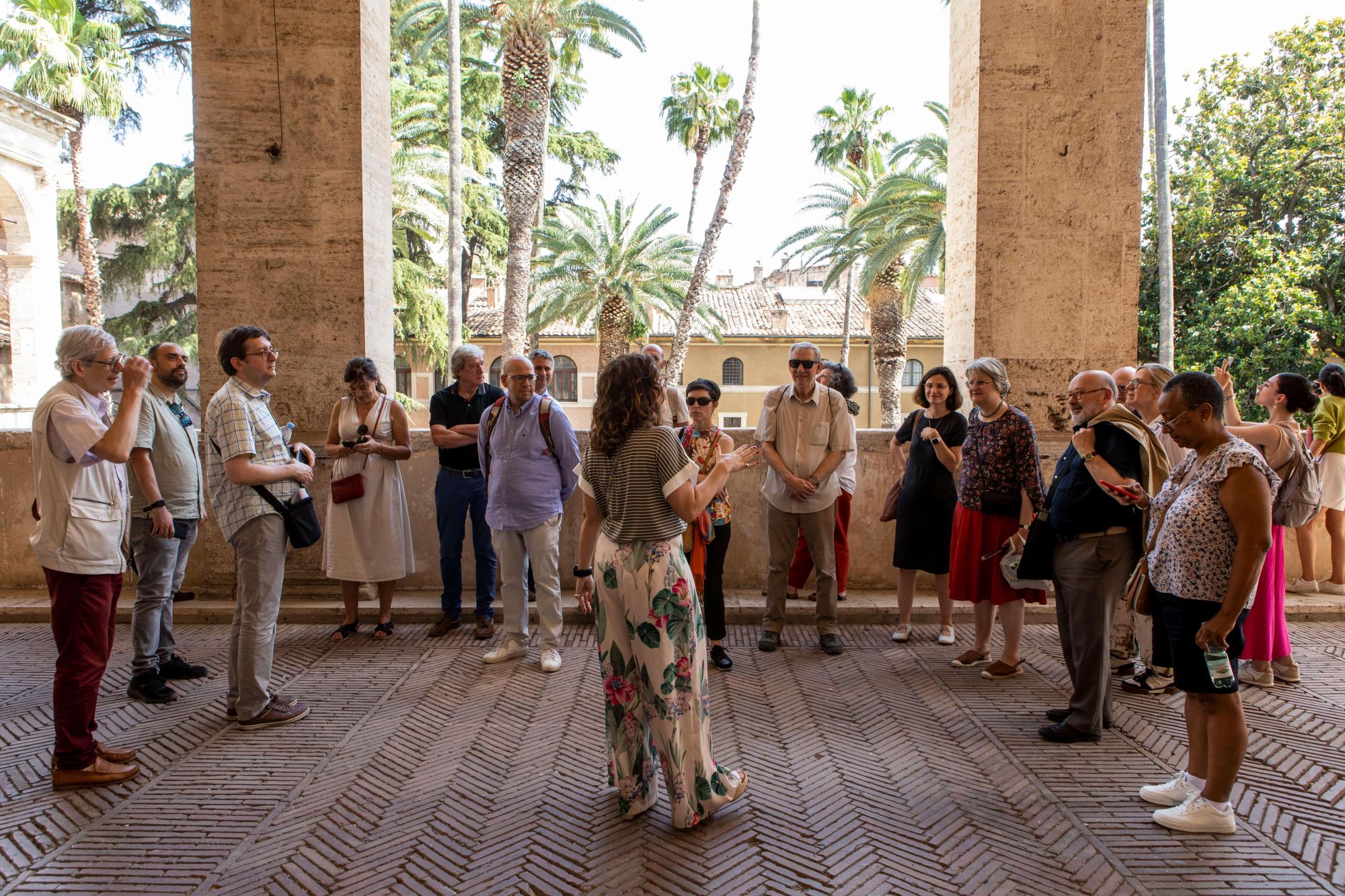On Friday, June 28, Palazzo Venezia hosted the closing session of the conference "Antiquaires voyageurs (XVI-XIX siècles)." The event, the result of a collaboration between Italian, French, Belgian and German institutions, aimed to focus both on the relationships between European traveling antiquarians from the Renaissance to the 19th century and on the development of knowledge of the ancient and medieval past through surviving artifacts.
For the occasion, 25 international scholars made a visit to Palazzo Venezia, introduced by Edith Gabrielli, Director of VIVE. The visit was divided into three distinct moments: an introduction about Palazzo Venezia and the works of art it houses, an in-depth look at the pieces from the Kircherian Museum that flowed right into Palazzo Venezia, and finally a presentation of the Odescalchi Collection.
The visit focused on some outstanding works: the Roman bronzes of the Young and Old Philosopher and Minerva dating back to the end of the third century AD; the early Christian bronze fish, a symbol of the Christian community; the wedding casket with stories of David, which recounts in 15 episodes the life of the King of Israel; the Christ Pantocrator, an exceptional product of medieval goldsmithing; and finally the mulieval head attributed to Nicola Pisano, a rare example of medieval sculpture in the round carved in a mineral. In the section devoted to the Odescalchi Collection, the focus was mainly on non-European pieces.
The initiative offered participants a unique opportunity to explore the artistic, cultural and historical importance of the artifacts preserved at Palazzo Venezia, further enriching the scholarly debate on the legacy of the ancient and medieval past.














